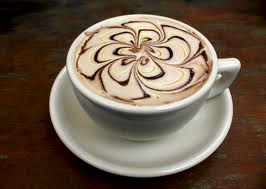Posted: 28 February 2014

“Language changes very fast” – John Maynard Smith.
As a wordsmith trained in more traditional ways of writing, Bradscribe cannot help but notice the strange, swift and staggering shuffle that has beset the English languge in the last twenty years.
When at university (and loving every windswept, rain-soaked minute of it), up to seventeen years ago(!), mobile phones were just catching on; it swiftly became apparent that texting was becoming the new norm for faster and shorter communication.
With a monumental growth in urbanization, and a corresponding rise in the percentage of the world population who inhabit an urban environment, work-patterns and lifestyles in general have altered tremendously. Cultural values have played a part in the transformation of language(s); but ultimately, the phenomenal proliferation of hand-held technology has had a dramatic impact, bringing a new wave cascade of abbreviated, truncated, slang-driven jargon – completely ripping up the rules of language and how it is utilised. The “written word” seems to be an out-dated concept in itself, with this tendency to text, and even use symbols (emoticons being particularly rife) on rapidly evolving small, touch-type devices.
New words constantly enter the English language (directly derived from texting and other communicative media no less), while disused ones drop into oblivion; moreover, existing words have been swiped by the new-gen to carry entirely different denotations.

“Use what language you will, you can never say anything but what you are” – Ralph Waldo Emerson.
Whether it be on the train in England, or in the shopping malls of Thailand, most people seem to have their heads bowed towards their smartphones, endlessly texting, besides loading apps or playing useless games. Bradscribe just glances at this thoroughly modern crowd with a slight amused grin. If the trains weren’t so ridiculously packed, you could most likely find me ROTFL.
One would say this scene is extraordinary, but it is so mind-bogglingly prevalent that it must surely now count as ordinary activity.
Interestingly, if a peep at some of their texts was possible, the chances of actually understanding any of the slang and abbreviations on show would be minimal. This should not come as a surprise. Such is the bewilderment of a constantly fluctuating language, transmogrifying through multifarious phases since its inception as Old English (derived from Old German) in tangible written form during the 5th century CE. Shaped by social upheavals of the Medieval Period, it twisted and turned into what is labelled Middle English, and then into Early Modern English, before settling on the Modern English used in the present.
With the upgrades in English Comprehension described (and dreaded!) above, it would appear that we are already immersed in the next tantalising stage of this incredible linguistic journey.

“Viewed freely, the English language is the accretion and growth of every dialect, race, and range of time, and is both the free and compacted composition of all” – Walt Whitman.
Increasing my presence on Facebook in the last 18 months, the major aspect one has had to get used to is working out what the mass of assorted acronyms included therein actually stand for. Easily, the most common expression to be found amidst the Comments must be the acronym:”lol,” short for Laugh Out Loud.
Originally appearing regularly on Usenet, this expression has since become ubiquitous on just about every other form of computer-mediated communication, and made its debut in the Oxford English Dictionary in March 2011. It is only in recent months that Bradscribe has succumbed to utilising it in his own brief texts.
Will my writing style have to change in order to accommodate these changes in my language? One hopes that drastic alterations will not be needed. While some people strive to move with the times, it is comforting to know that others will appreciate my adherence to more traditional creative values.
Part of the wonder of English lies in its ability to have adjusted and adapted across many centuries, while stagnant languages have completely died out.
It just remains to be seen what other tectonic shifts are in store for the English language, and how and when we will seize the chance to use them.















